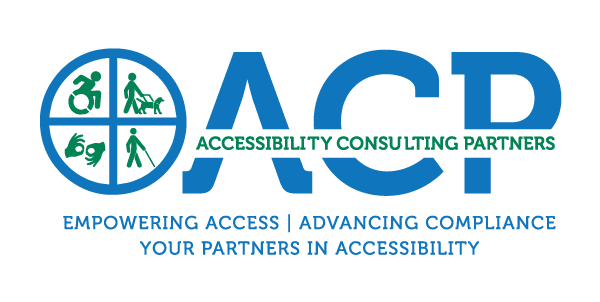Balancing Responsibility and Power in ADA Compliance
The role of the Americans with Disabilities Act Coordinators (ADACs) is pivotal in ensuring that organizations comply with the ADA’s stringent accessibility requirements. They are responsible for developing strategies, managing accommodation requests, and providing an inclusive environment for individuals with disabilities. However, many ADACs face a fundamental challenge: they often carry significant responsibility without the authority to make decisions or enforce changes. This power imbalance can lead to internal struggles that hinder effective ADA compliance.

The Role and Challenges of ADA Coordinators
ADA Coordinators are responsible for ensuring compliance with all ADA regulations, which requires an in-depth understanding of the law and staying updated on evolving guidelines. Their duties include overseeing accessibility measures, educating staff, and managing requests for accommodations. In some cases, they may also coordinate with legal teams and other departments to avoid compliance risks.
Despite this vast responsibility, ADACs often lack the necessary power to take direct action. For instance, they may identify accessibility issues within a facility but lack the authority to approve the necessary funding for repairs or modifications. Occasionally, department heads may view ADA compliance as secondary to their primary operational goals, leading to further resistance when ADACs propose necessary changes. These power struggles can slow down or even prevent the implementation of critical compliance initiatives.
According to the Disability Rights Education and Defense Fund, ADA Coordinators face many organizational barriers, including resistance from colleagues who may not fully understand the ADA’s requirements or the importance of compliance(KNOW-THE-ADA).
This dynamic places ADACs in a difficult position, as they must advocate for compliance while managing inter-departmental resistance and budget constraints.
Building Collaborative Relationships
ADA Coordinators must build strong, collaborative relationships with key stakeholders, including department heads, legal teams, and risk management personnel to overcome these challenges. Collaboration is the key to navigating the power struggles that often arise in large organizations.
Engaging department heads early in the process can help align their goals with the broader objectives of ADA compliance. When ADA Coordinators work closely with these leaders, they can frame accessibility measures as opportunities for improvement rather than just regulatory requirements. By doing so, department heads are more likely to see the value in proactive compliance efforts, which can help prevent costly lawsuits and improve the overall user experience for individuals with disabilities.
Additionally, collaborating with legal and risk management teams is crucial for strengthening an ADA Coordinator’s influence within the organization. Legal teams can help emphasize the potential financial and legal risks associated with non-compliance, presenting a strong case for investing in accessibility initiatives. This collaboration can also provide a framework for ADA Coordinators to advocate for changes while staying within the organization’s legal boundaries.
The ADA National Network underscores the importance of collaboration between ADA Coordinators and legal teams, noting that legal departments can offer essential guidance on navigating complex regulations and ensuring that an organization’s policies comply with current laws(Understood, Access4Biz).

Strategic Use of External Resources
Another effective strategy for ADACs is to leverage external resources and expertise to supplement their efforts. Organizations like the Disability Rights Education and Defense Fund and the ADA National Network offer valuable guidance, tools, and case studies that ADA Coordinators can use to strengthen their arguments for compliance and bridge the gap between responsibility and authority.
These external resources can also provide ADA Coordinators with examples of best practices from other organizations that have successfully managed ADA compliance efforts. By bringing in outside perspectives, ADACs can show their internal stakeholders that investing in accessibility is about meeting legal requirements and creating a more inclusive and welcoming environment for all individuals. Additionally, external resources can offer guidance on technical issues, such as facility design or digital accessibility, which can be invaluable when making the case for organizational change.
Turning Responsibility into Action
The challenges faced by ADA Coordinators are significant, but they are not insurmountable. By building solid relationships with key stakeholders, collaborating with legal and risk management teams, and leveraging external expertise, ADACs can overcome the power struggles they encounter. More importantly, they can ensure that ADA compliance becomes an integral part of the organization’s overall strategy rather than an afterthought or a check-the-box task.
ADA compliance is not just about avoiding lawsuits or adhering to regulations—it is about creating an inclusive environment where everyone has equal access and opportunities. Organizations can meet their legal obligations and foster a culture of inclusion and respect by empowering ADA Coordinators with the authority and resources they need.
For further reading on ADA compliance and strategies for navigating organizational challenges, consider reviewing these resources:
